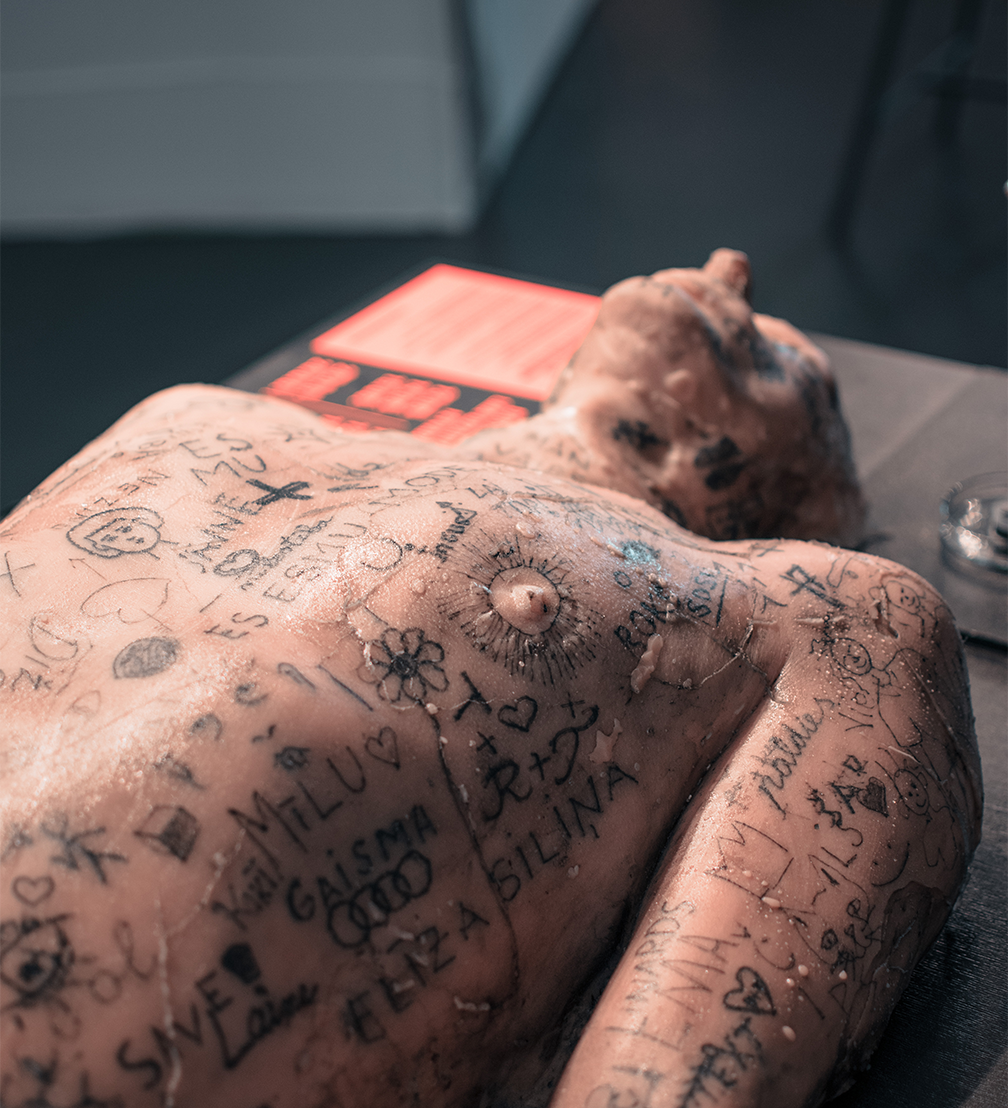
While completing her master’s degree in Functional Design at the Art Academy of Latvia (AAL), Elīza Siliņa created a provocative installation entitled Everlasting Handwriting. To encourage reflection on the significance of handwriting in the digital age, the young designer interpreted the writing process as tattooing on the skin of an artificially created human figure.
In her master’s thesis, Elīza Siliņa explores handwriting as a form of design and self-expression that offers both aesthetic diversity and emotional experience. The designer emphasises that in today’s digital age, when technological developments are increasingly replacing traditional handwriting, reducing its role in everyday communication, it is important to remind ourselves of handwriting as a part of creativity and personality.
As a result, she created an interactive installation, Everlasting Handwriting, in the form of workshops offering visitors a unique writing experience — writing on the skin of an artificially created human figure with a tattoo machine. «Writing on paper is an everyday activity, often rushed and thoughtless, but changing the writing surface to «human flesh» invites participants to become aware of the significance of this process and to experience writing in a completely new and unusual way,» says Elīza.
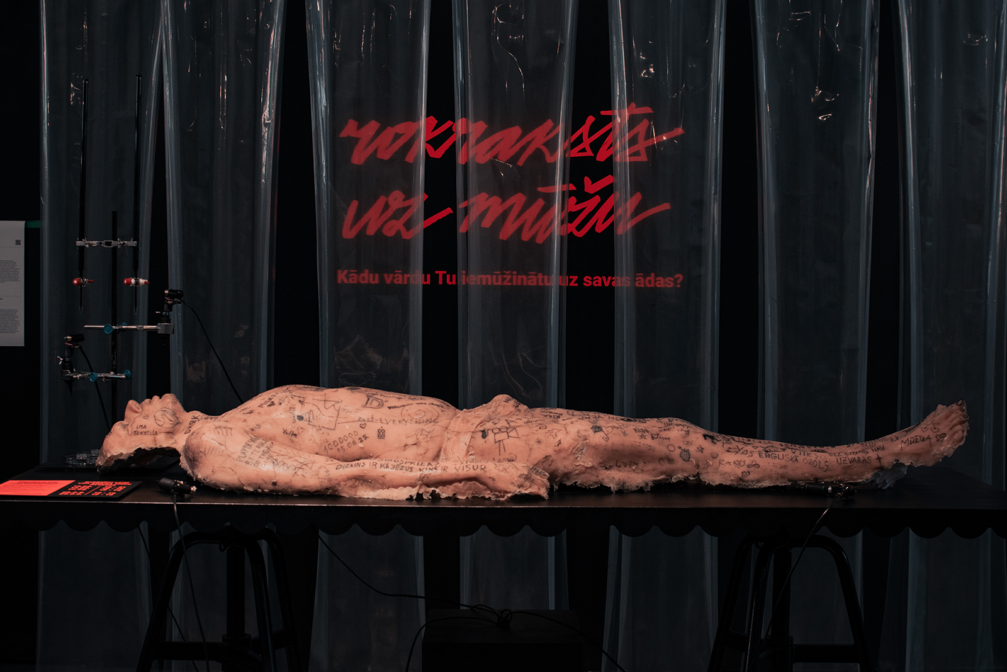
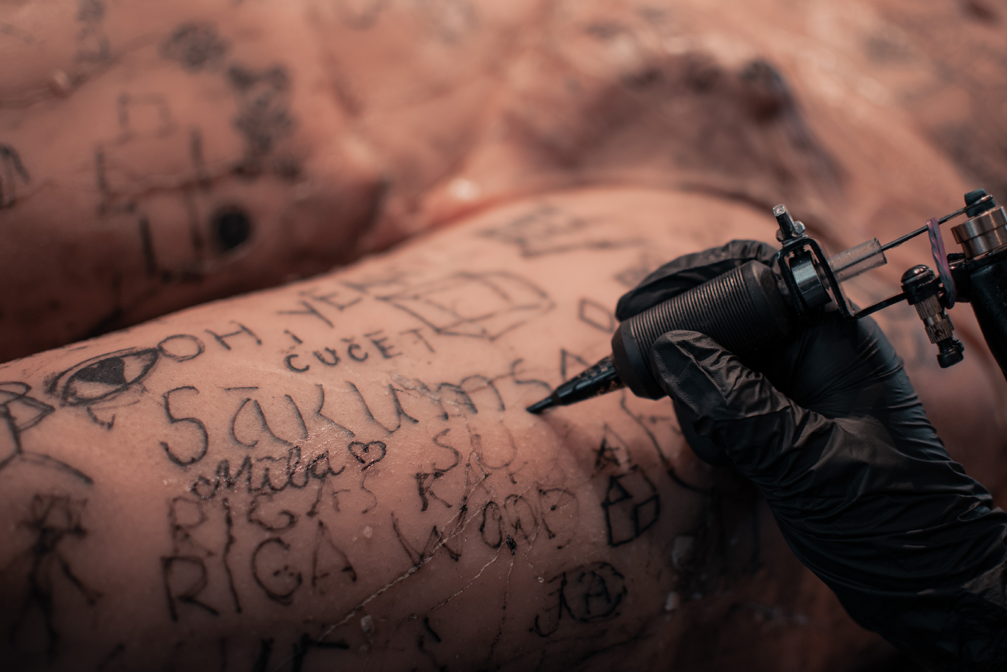
The workshops took place during the AAL Design Days, and all visitors to the exhibition were invited to join in. Participants were free to express themselves in their interpretation and execution of the theme. Elīza points out that people not only wanted to try writing with a tattoo machine but were also willing to engage in conversations about the meaning of handwriting and their personal experiences with writing: «People shared memories of handwriting taught in school, letter writing, diary entries, how handwriting has changed over time, and shared their thoughts on the future of handwriting. These conversations revealed not only nostalgia but also a deeper awareness of the value of handwriting as a form of identity and self-expression.»
The designer observed that many workshop participants chose to draw pictures rather than write words or sentences. In her opinion, this trend indicates a shift away from the original function of handwriting and its transformation into a visual gesture that transcends the boundaries of text. «The expressions of handwriting were very diverse — from very neat to experimental. The generational differences were particularly striking — older participants tended to write in a very structured way, while younger visitors stood out with their freedom, spontaneity, and desire to play with form,» comments Elīza.
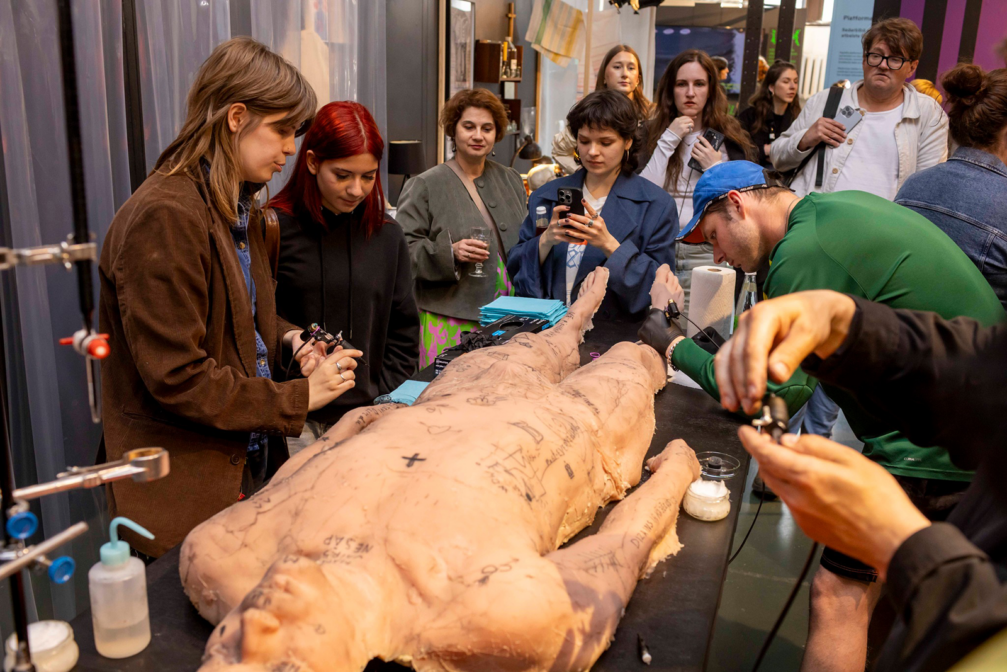
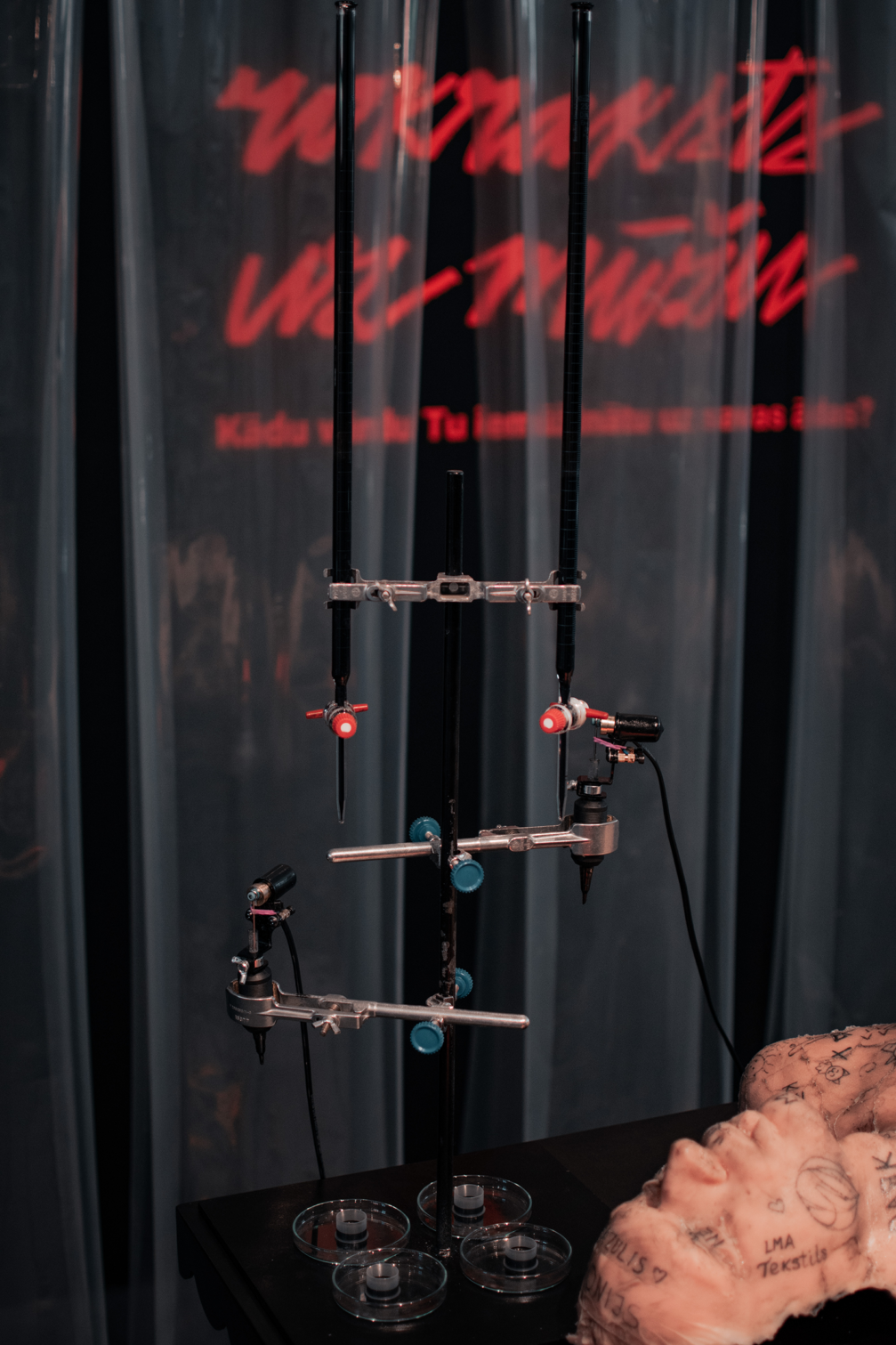
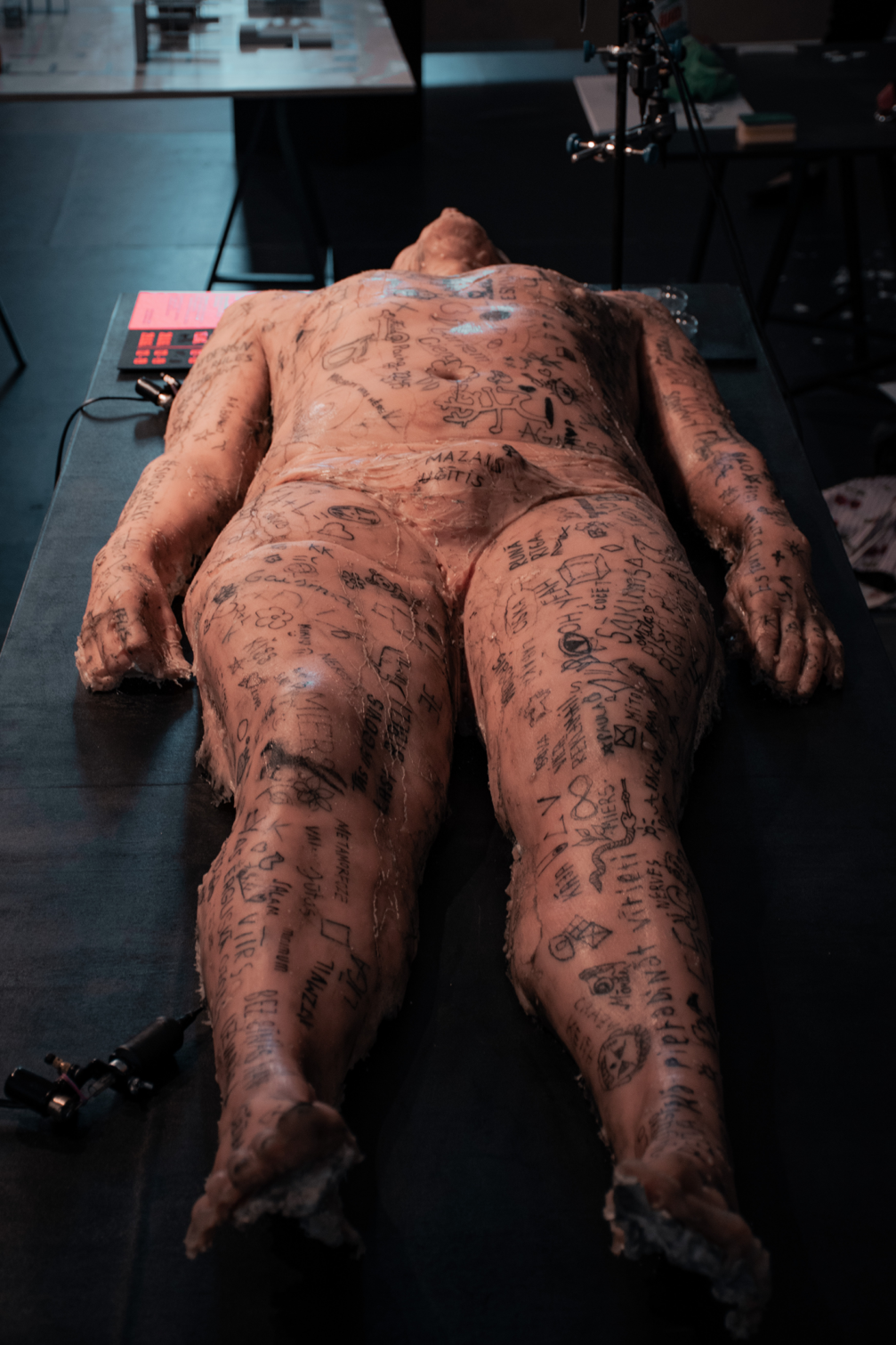
Since she had no tattooing experience herself, tattoo artist Zane Neimane helped her prepare for the workshops, while Uģis Zauerhagens, a student of the AALFashion Design programme, became the model for the human figure in the installation. Elīza says that creating the lifelike replica was quite labour-intensive: first, Uģis’ body had to be cast in plaster, followed by two stages of silicone coating using Dragon Skin silicone, which is commonly used in film makeup, as well as construction silicone. The designer was assisted in this process by the AAL professor and sculptor Kirils Panteļejevs. Elīza also expresses her gratitude to her master’s thesis supervisor, Māris Mortukāns, for his creative and practical support in the conception and development of the work.
Other projects by students of the Design Department can be viewed in the AAL virtual catalogue.
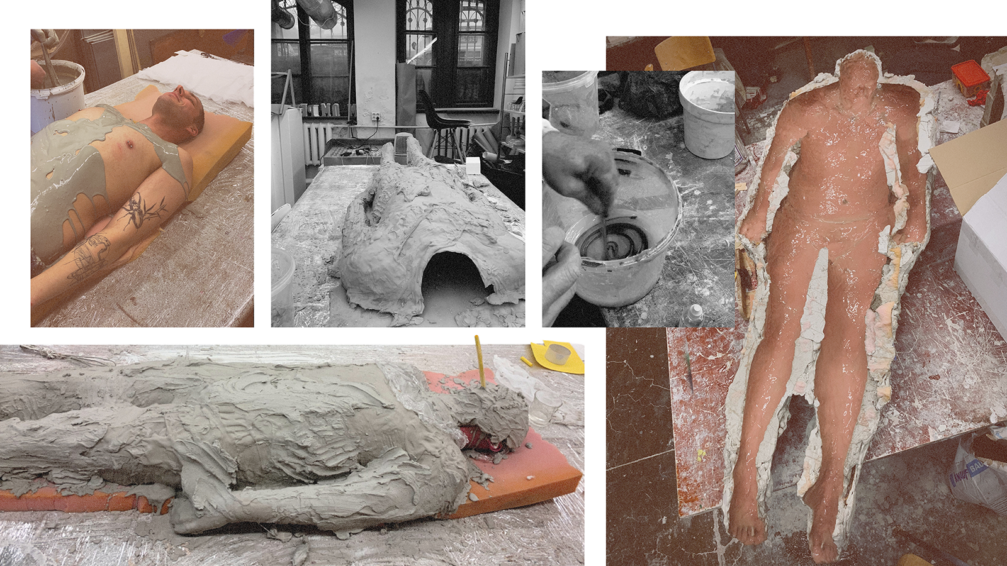
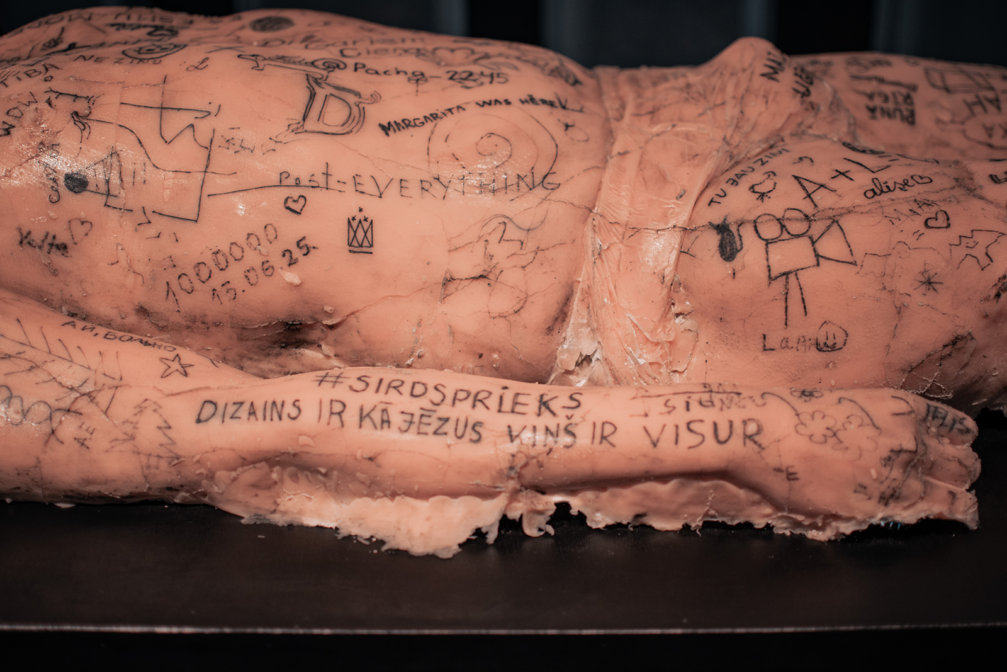
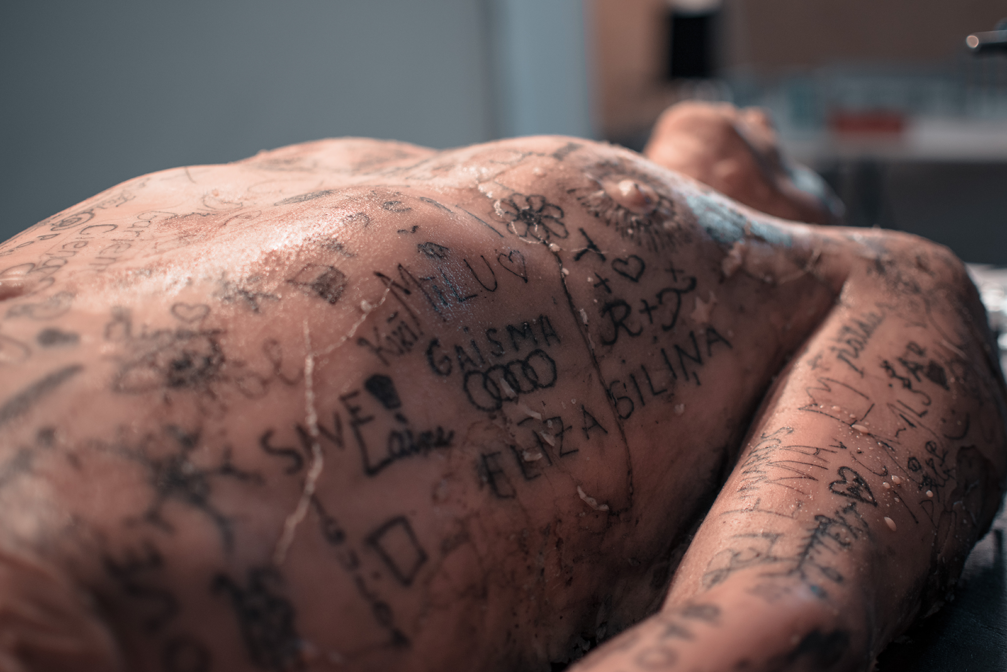
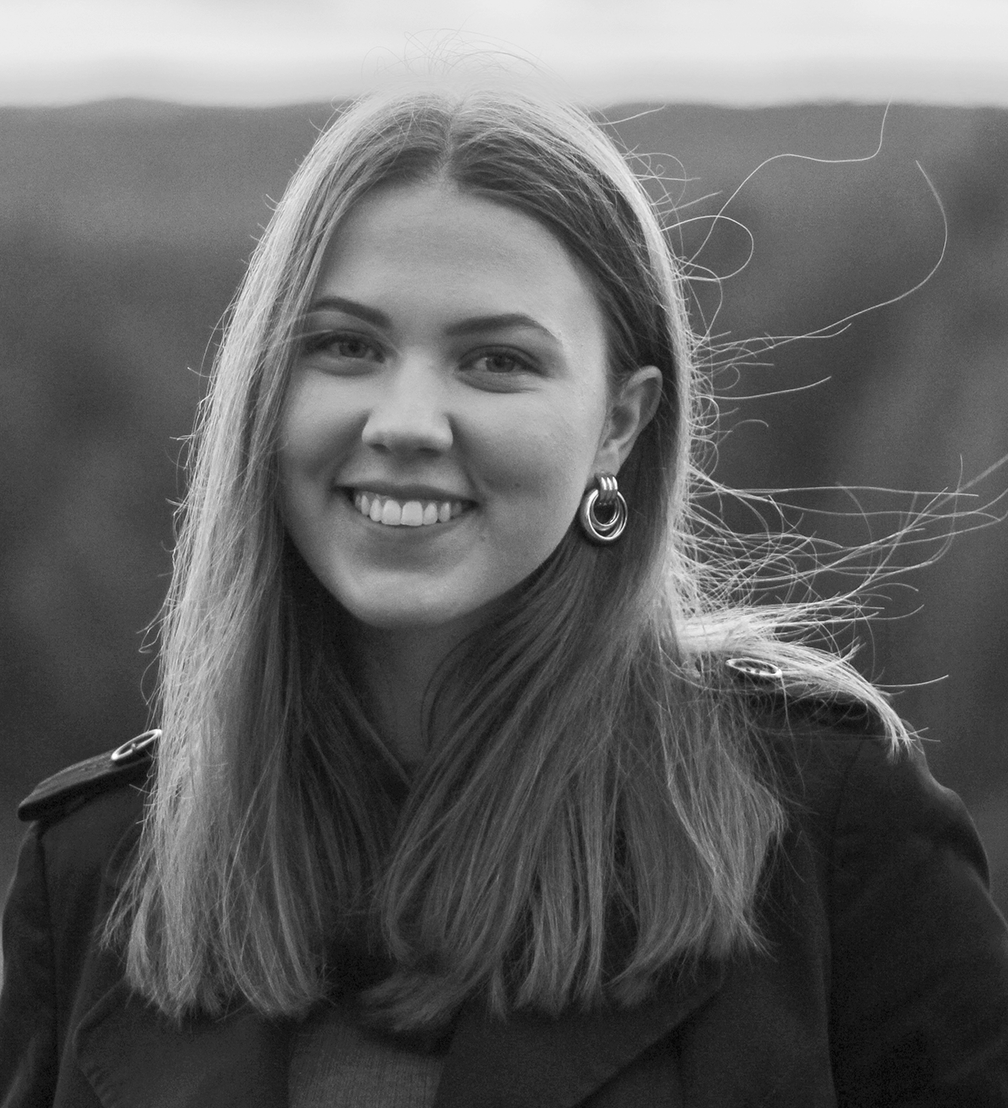


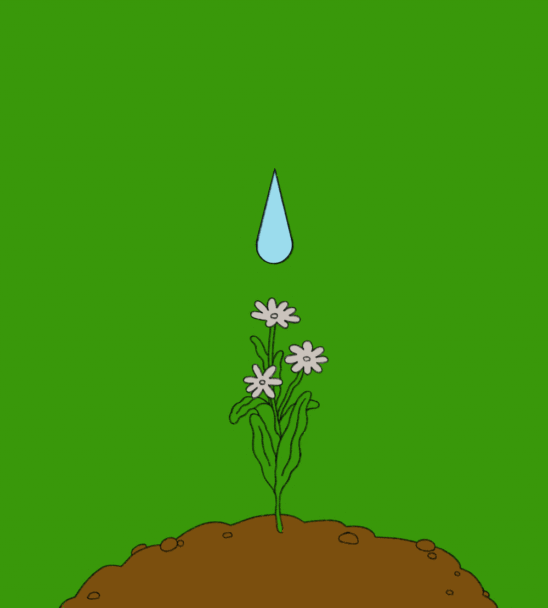
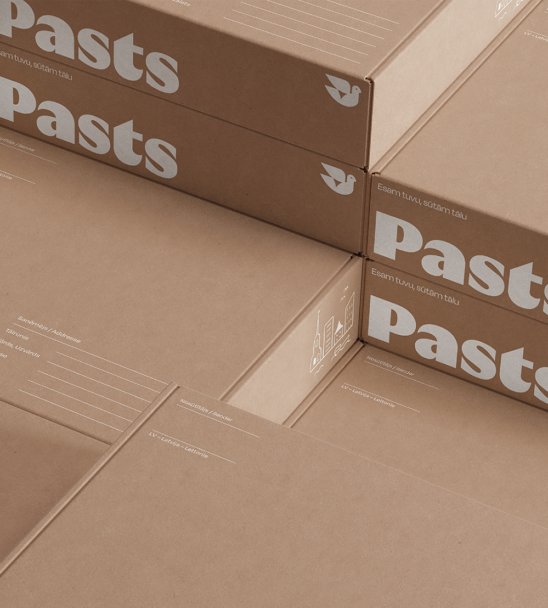
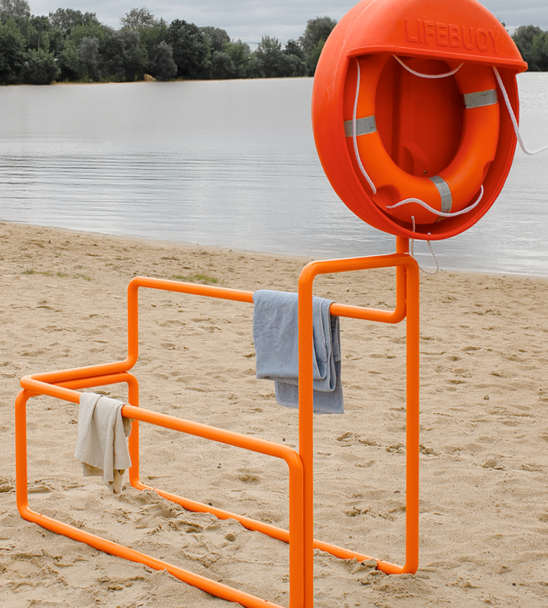
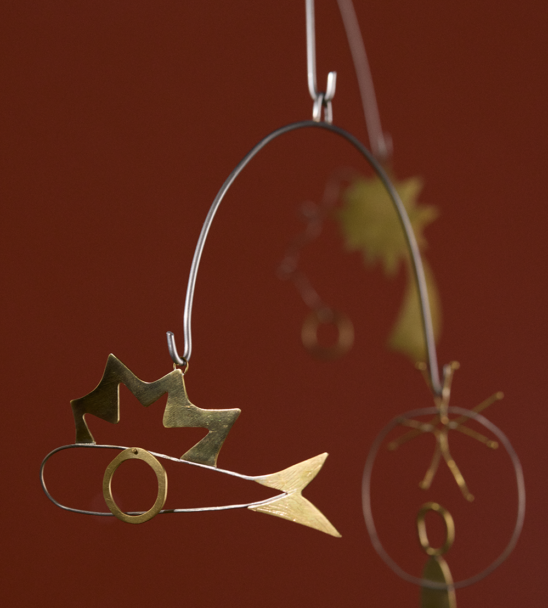


Viedokļi